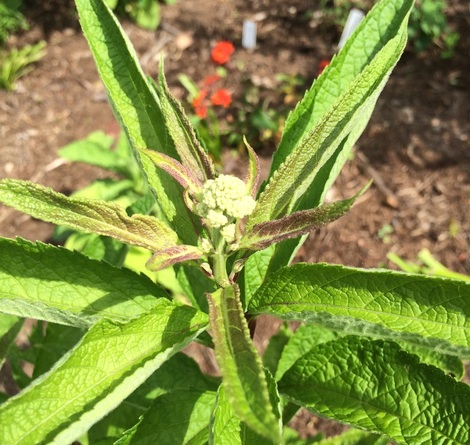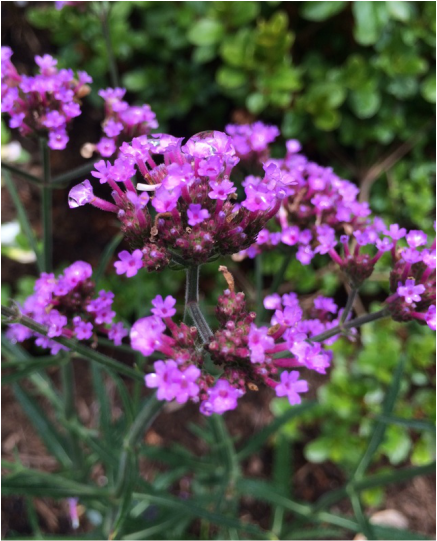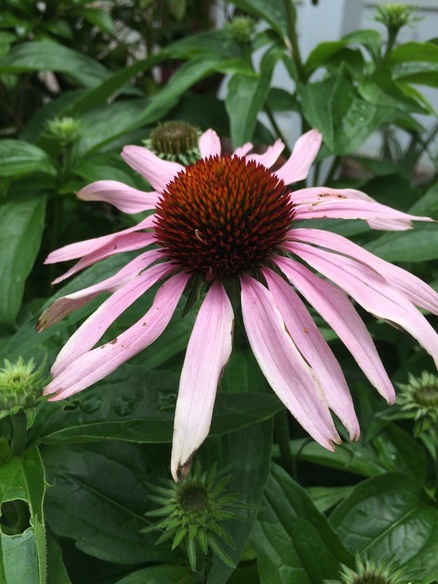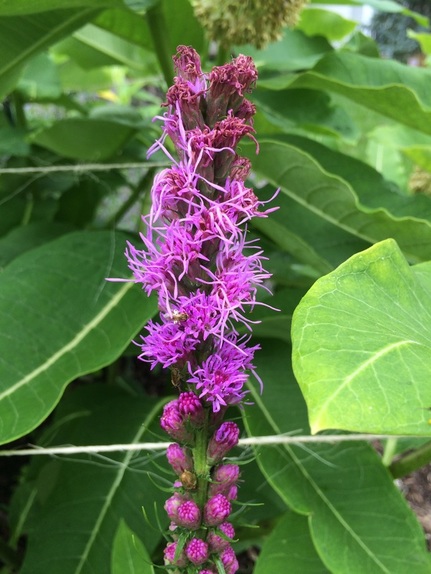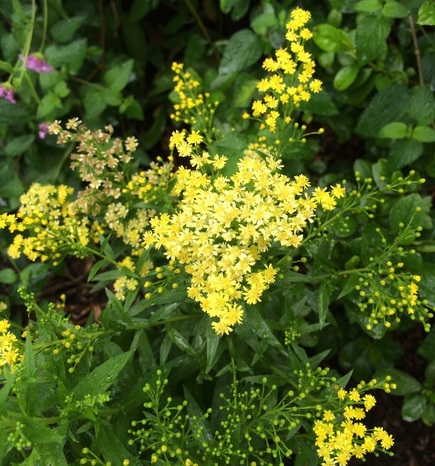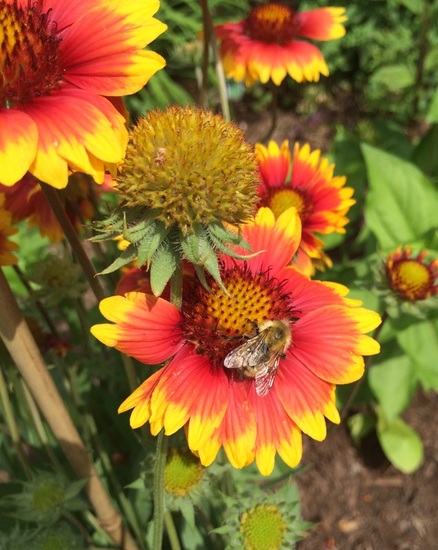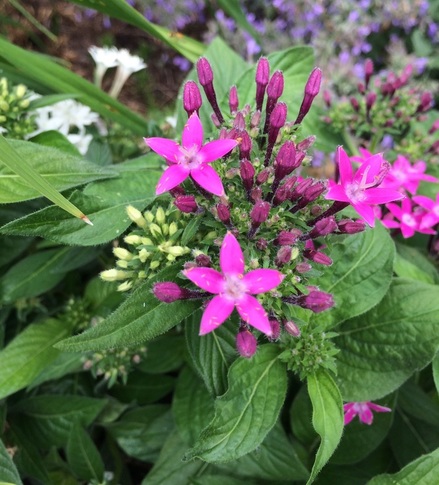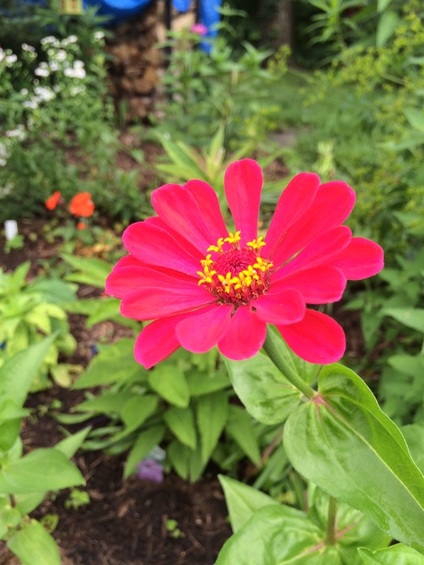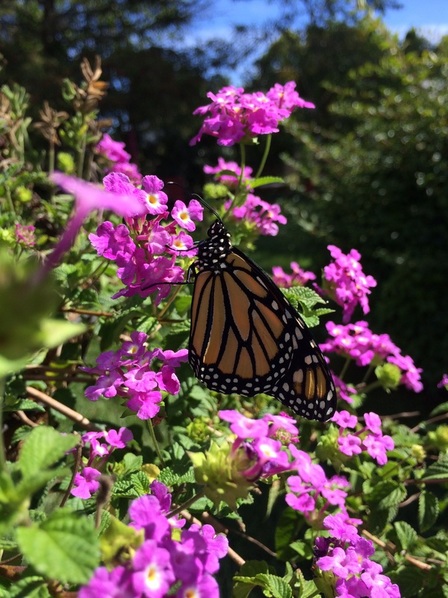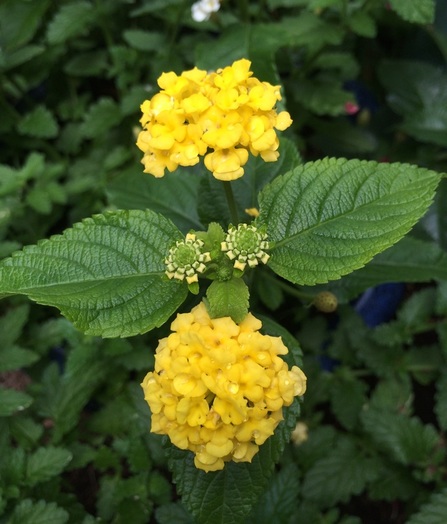There are many rewards in gardening for Monarchs. Butterfly gardening adds to the biodiversity of your yard. This means you can increase the variety of insects which can pollinate many different plants. Plus, all pollinators need our help. If you use plants native to Maryland, those plants will require less in the way of maintenance.
Native Maryland Milkweeds (Perennials)
Milkweeds are defined by their sap. When you break off a leaf or a branch, the sap is a milky-white color and contains latex. The flowers of a milkweed plant are nectar-rich, providing a food source for a myriad of pollinators, but especially, for butterflies. In the case of larval-stage Monarchs, milkweed is their only source of food, so it is essential for their survival. One of the beauties in adding milkweed to your garden is that deer find it distasteful and will not eat it.
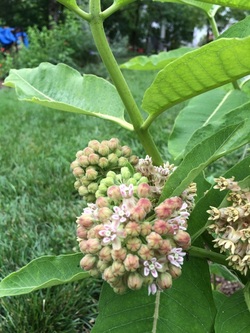
Asclepias syriaca - Common Milkweed
Common Milkweed is found throughout the state of Maryland. Patches of this milkweed are often found along roadsides, farmers' fields, and other natural areas. It will grow from 4-5 feet tall and produce fragrant pink to purplish flowers. A note to gardeners: if you add Common Milkweed to your garden, be prepared for it to takeoff. It will take some fortitude to keep it corralled to one area of your garden. In my experience, though, this is the milkweed the Monarchs love best! I have found more Monarch eggs and larvae on Common Milkweed than any other.
Common Milkweed is found throughout the state of Maryland. Patches of this milkweed are often found along roadsides, farmers' fields, and other natural areas. It will grow from 4-5 feet tall and produce fragrant pink to purplish flowers. A note to gardeners: if you add Common Milkweed to your garden, be prepared for it to takeoff. It will take some fortitude to keep it corralled to one area of your garden. In my experience, though, this is the milkweed the Monarchs love best! I have found more Monarch eggs and larvae on Common Milkweed than any other.
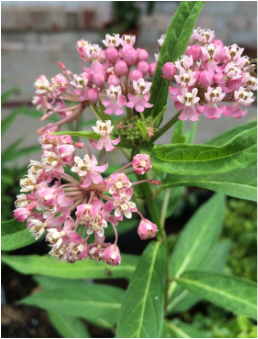
Asclepias incarnata - Swamp Milkweed
Don't let the name fool you. Swamp milkweed will do just fine in a drier soil in full sunlight. The flowers are not as fragrant, but they will last longer than those of the Common Milkweed and produce an excellent supply of nectar for all sorts of pollinators, especially Monarchs. Swamp milkweed grows about 4 feet tall and will not spread. I have found Monarch eggs and larvae on Swamp Milkweed, but not in great numbers. The larvae will have no problem consuming Swamp Milkweed's leaves.
Don't let the name fool you. Swamp milkweed will do just fine in a drier soil in full sunlight. The flowers are not as fragrant, but they will last longer than those of the Common Milkweed and produce an excellent supply of nectar for all sorts of pollinators, especially Monarchs. Swamp milkweed grows about 4 feet tall and will not spread. I have found Monarch eggs and larvae on Swamp Milkweed, but not in great numbers. The larvae will have no problem consuming Swamp Milkweed's leaves.
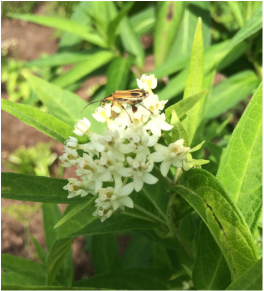
Asclepias incarnata - Swamp Milkweed "Ice Ballet"
"Ice Ballet" will also tolerate a drier soil, though it will need water until it becomes established. It has beautiful, bright white flowers that attract pollinators. It is a lovely addition to your garden.
"Ice Ballet" will also tolerate a drier soil, though it will need water until it becomes established. It has beautiful, bright white flowers that attract pollinators. It is a lovely addition to your garden.
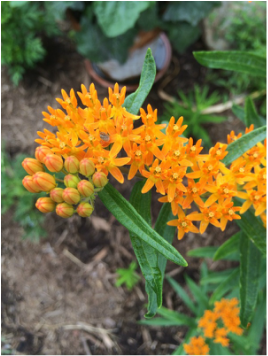
Asclepias tuberosa - Butterfly Weed
Butterfly Weed produces a vivid orange flower with copious nectar. There is also a variation ("Hello Yellow") with bright yellow flowers. Butterfly Weed will reach 3 feet high, at most. It prefers a dry soil in full sunlight. It not only attracts many butterflies, but also hummingbirds. Butterfly Weed will bloom all summer long, needing little to no maintenance. It will be a stand-out in your garden.
Butterfly Weed produces a vivid orange flower with copious nectar. There is also a variation ("Hello Yellow") with bright yellow flowers. Butterfly Weed will reach 3 feet high, at most. It prefers a dry soil in full sunlight. It not only attracts many butterflies, but also hummingbirds. Butterfly Weed will bloom all summer long, needing little to no maintenance. It will be a stand-out in your garden.
Maryland Native Perennials
Joe Pye Weed (Eupatorium maculatum)
Verbena - perennial
Purple Coneflower (Echinacea purpurea)
Blazing Star, Gayfeather (Liatris)
Goldenrod (Solidago sempervirens)
Two other native Maryland perennials to consider are Bee Balm (Monarda didyma) and New England Aster (Symphyotrichum novae-angliae).
Nectar-rich Annuals
Blanket flower (Gaillardia x grandiflora)
Penta (Pentas lanceolata)
Zinnia profusion (flat-headed, hybrid)
Verbena - annual
Lantana (Lantana camera)
Proudly powered by Weebly
